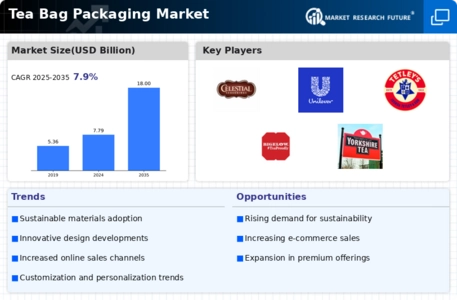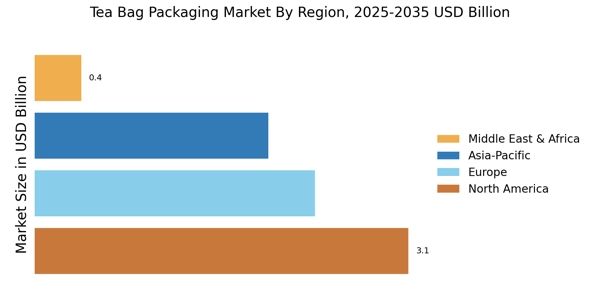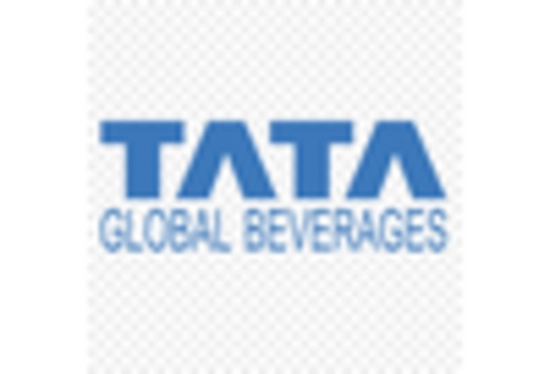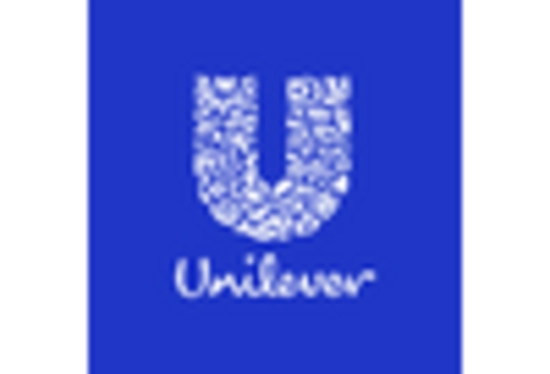The Tea Bag Packaging Market is currently characterized by a dynamic competitive landscape, driven by increasing consumer demand for convenience and sustainability. Major players such as Unilever (GB), Tata Global Beverages (IN), and Twinings (GB) are strategically positioning themselves through innovation and regional expansion. Unilever (GB) focuses on enhancing its product offerings with eco-friendly packaging solutions, while Tata Global Beverages (IN) emphasizes local sourcing and production to cater to regional tastes. Twinings (GB) leverages its heritage and brand strength to introduce premium tea blends, thereby appealing to a niche market segment. Collectively, these strategies contribute to a moderately fragmented market structure, where competition is intensifying as companies seek to differentiate themselves through unique value propositions.
In terms of business tactics, key players are increasingly localizing manufacturing and optimizing their supply chains to enhance efficiency and reduce costs. This approach not only allows for quicker response times to market demands but also aligns with sustainability goals by minimizing transportation emissions. The competitive structure of the market remains moderately fragmented, with several players vying for market share, yet the influence of major companies is palpable as they set trends and standards that smaller entities often follow.
In August 2025, Unilever (GB) announced a partnership with a leading sustainable packaging firm to develop biodegradable tea bag materials. This strategic move underscores Unilever's commitment to sustainability and positions the company as a frontrunner in eco-conscious packaging solutions. By investing in innovative materials, Unilever aims to attract environmentally aware consumers, thereby enhancing its market share in the premium segment of the tea bag packaging market.
In September 2025, Tata Global Beverages (IN) launched a new line of organic tea bags, packaged in recyclable materials. This initiative not only caters to the growing demand for organic products but also aligns with the company's sustainability objectives. The introduction of this product line is likely to strengthen Tata's brand loyalty among health-conscious consumers and expand its footprint in the organic segment of the market.
In July 2025, Twinings (GB) unveiled a digital marketing campaign aimed at promoting its new range of herbal tea bags. This campaign utilizes advanced analytics to target specific consumer demographics, thereby enhancing engagement and driving sales. The strategic emphasis on digital transformation reflects Twinings' recognition of the importance of online presence in today's market, potentially leading to increased market penetration and brand visibility.
As of October 2025, the Tea Bag Packaging Market is witnessing trends such as digitalization, sustainability, and the integration of artificial intelligence in production processes. Strategic alliances among companies are becoming increasingly common, as they seek to leverage each other's strengths to enhance competitive positioning. Looking ahead, it appears that competitive differentiation will evolve from traditional price-based competition to a focus on innovation, technology, and supply chain reliability. Companies that can effectively navigate these trends are likely to emerge as leaders in the market.


















Leave a Comment